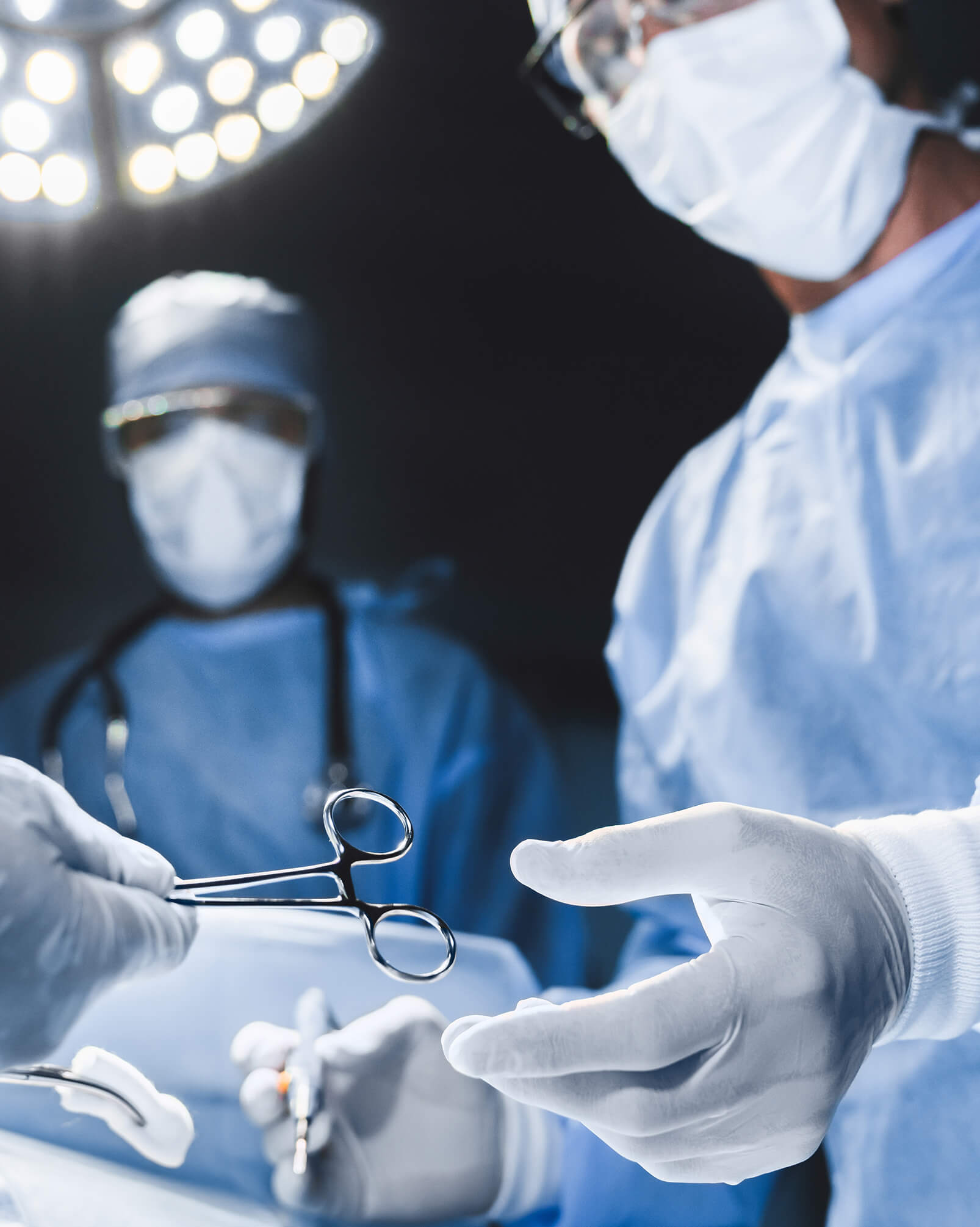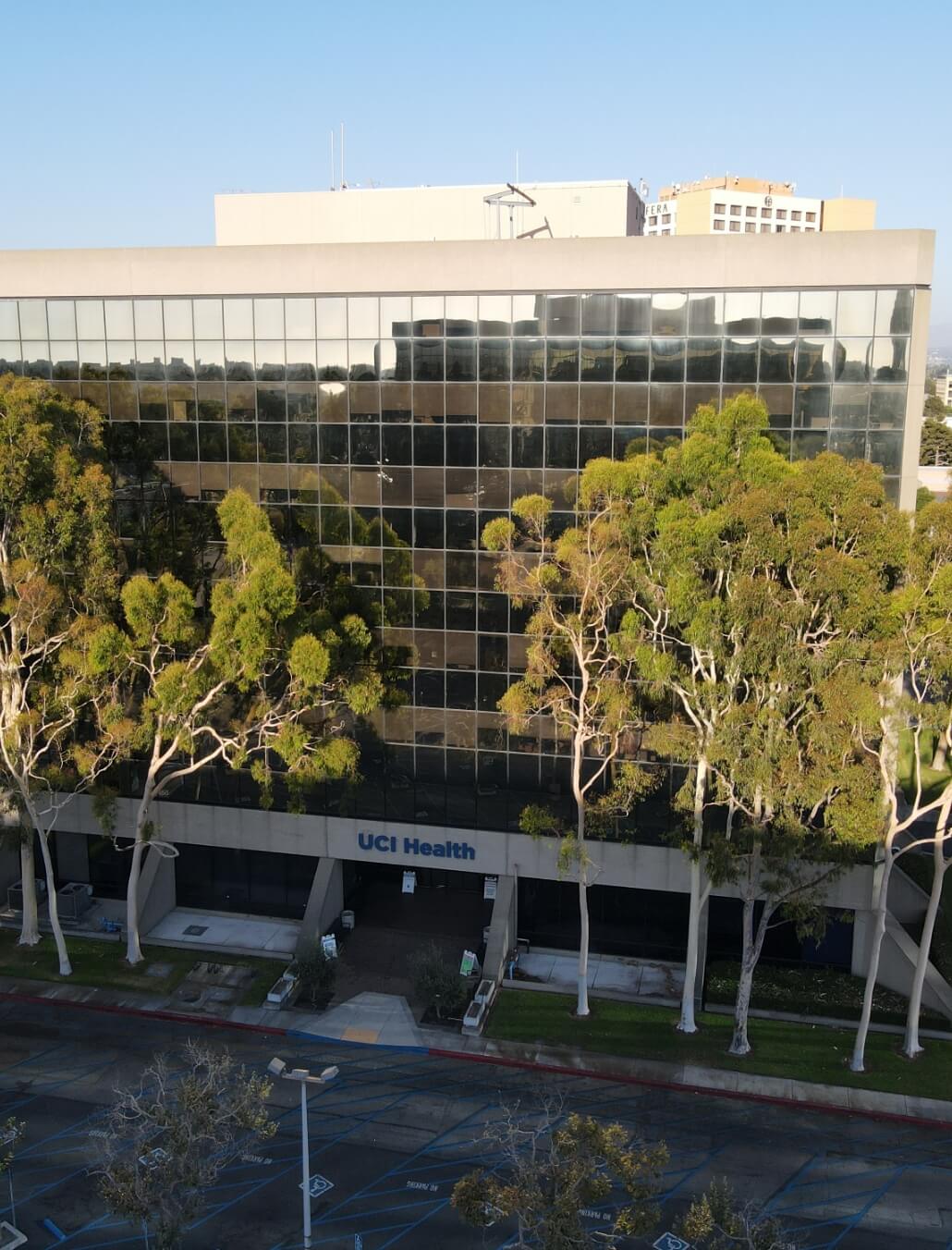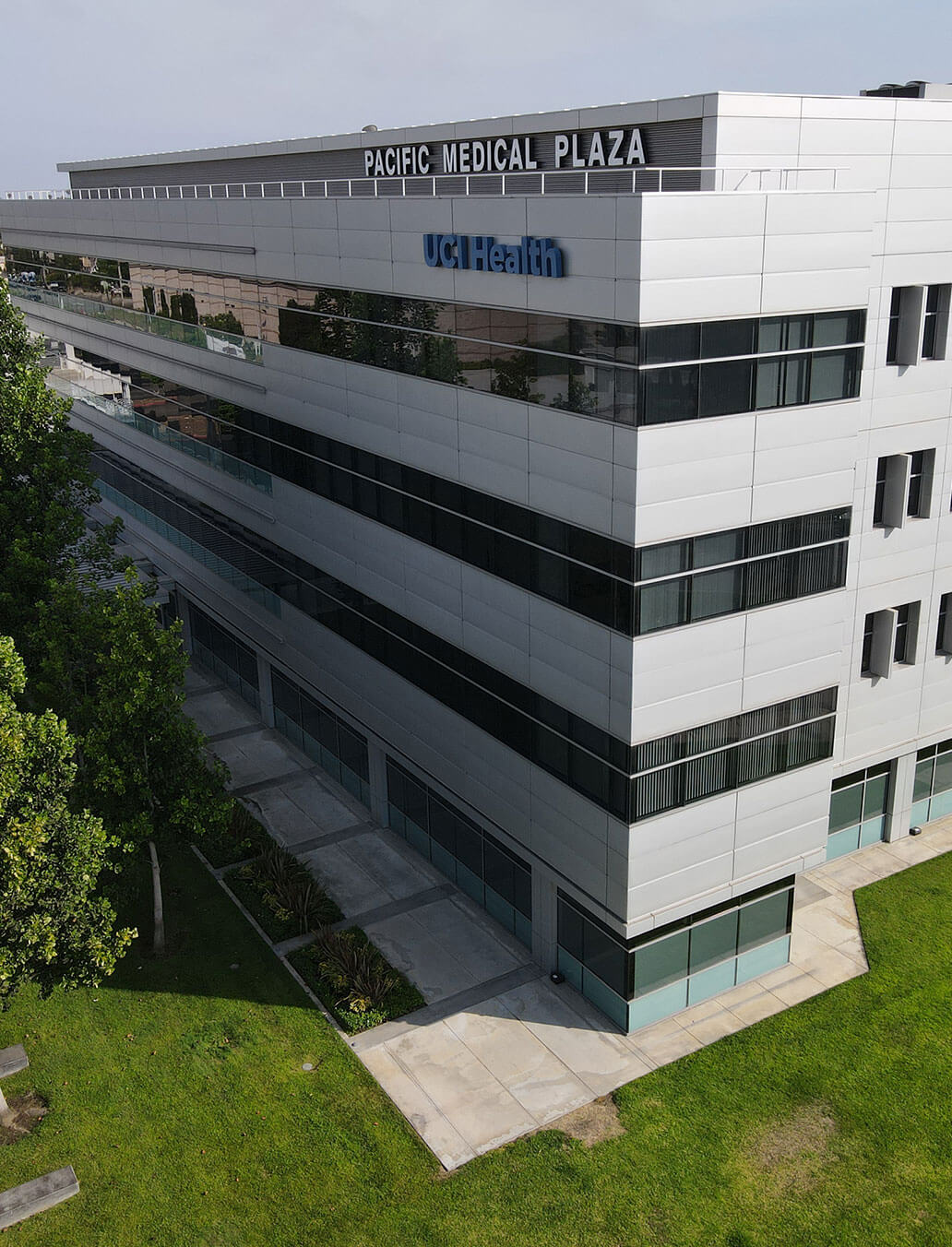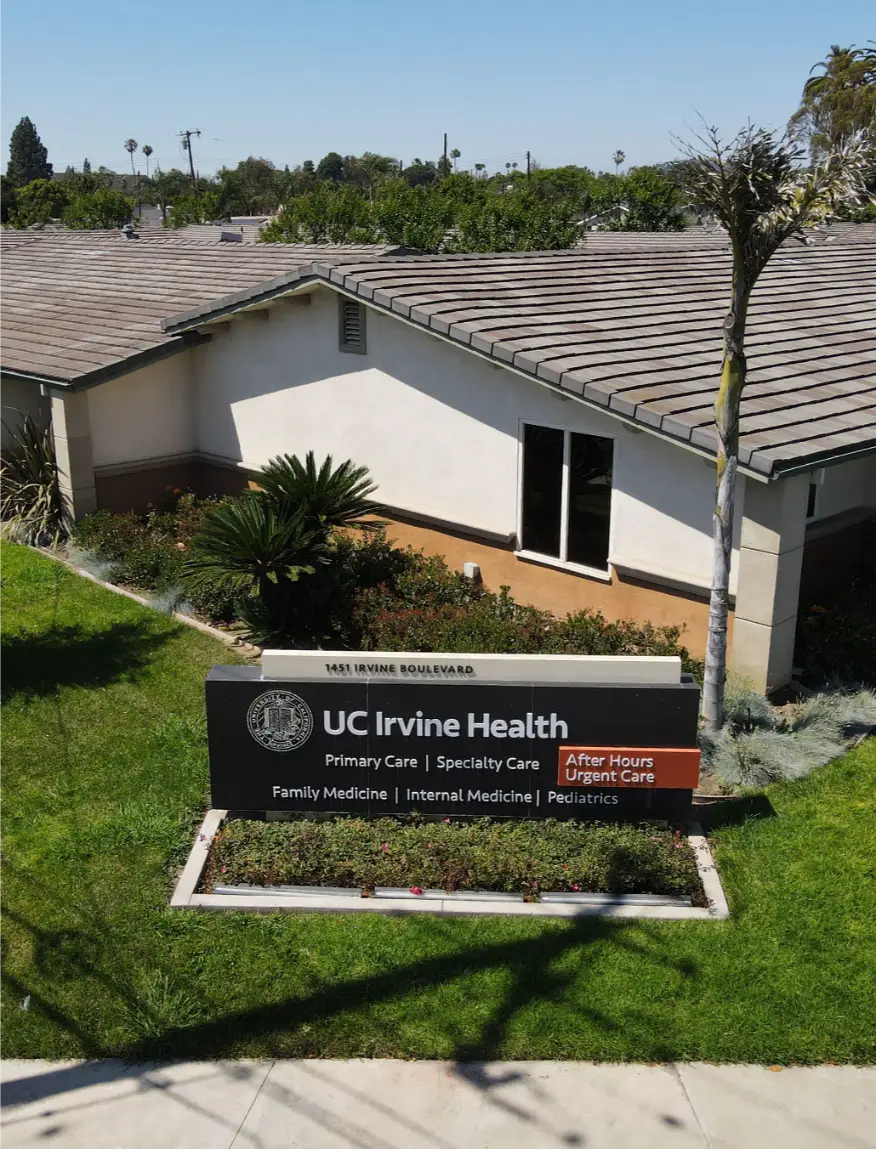Craniofacial distraction uses the healing properties of bones and other tissue to gradually lengthen or extend misshapen or underdeveloped bones in the jaw, face, or skull. Also known as distraction osteogenesis, the approach uses surgery (often planned with 3D virtual surgical planning) to cut the bone and a device called a distractor to gradually separate the bone segments, allowing new bone to grow into and fill the gap. The process continues until the new bone has grown to the desired dimensions.
On infants, children, and adolescents, this procedure adjusts the jaws’ size and alignment and corrects a range of other facial and skull malformations.
To learn more about craniofacial distraction, contact UCI Plastic Surgery to schedule a consultation in our Orange, CA, office with Dr. Raj Vyas. Pediatric patients should schedule a consultation with Dr. Vyas at his office at CHOC.
How Does Craniofacial Distraction Work?
Craniofacial distraction follows a four-step process:
- Dr. Vyas makes a full or partial cut into the bone he intends to lengthen.
- He then attaches a device called a distractor to hold the two pieces of bone together
- The distractor is gradually activated to slowly create a space at the site of the bone cut. Doing this slowly, bone gradually grows into and fills the gap.
- After achieving the desired bone length and shape, the distractor remains in place for about 2-3 months to allow the newly developed bone to solidify and strengthen.
- Dr. Vyas removes the distractor, completing treatment.
Craniofacial distraction harnesses the body’s natural healing response — the same process that repairs a broken bone — to permanently extend and reshape underdeveloped or misshapen bones in the jaw, face, or skull. It does not require any grafts, implants, or permanent plates or screws.
What Problems Can Craniofacial Distraction Correct?
Craniofacial distraction – often as part of a multidisciplinary specialty treatment – can correct:
- Breathing and feeding problems in infants and toddlers caused by a small jaw
- Skeletal growth deficiencies secondary to cleft lip and palate
- Hemifacial microsomia, a condition at birth in which the tissues on one side of the face are underdeveloped
- Underdeveloped cheekbones and eye sockets (orbits) in children, which don’t give the eyes sufficient protection
- Misaligned jaws in children and adolescents
- Craniosynostosis, a condition in which the growth seams in an infant’s skull close too early, restricting the skull’s natural growth
- Other malformations of the bones in the jaw, face, or skull

Preparing for Craniofacial Distraction
In preparation for craniofacial distraction, you will meet with Dr. Vyas, who will explain what will happen in the initial procedure to cut the bone and attach the distractor and what your child will experience in the distraction process over the following weeks. He will take precise measurements of your child’s face and head.
A CT scan may be necessary to reveal the treatment area’s underlying structure and get even more precise measurements of the bones. Dr. Vyas may use computer-assisted modeling to plan the procedure and show you and your child how the treatment will change your child’s jaw, face, or head. He will answer any questions you may have and explain any preparations you may need to make at home.
Start Your Journey Today!
UCI Plastic Surgery is a leader in the field of cosmetic surgery. Each of our specialists is highly knowledgeable, trained, and committed to bringing our patients the latest advancements in the field. Learn how our experts can help you obtain industry-leading results by scheduling a consultation today.
Schedule A ConsultationWhat Will My Child Experience During Craniofacial Distraction?
The initial procedure to cut the bone and attach the distractor takes place while your child is under general anesthesia. When they wake up from the anesthesia, the distractor will be in place. You can then go home to begin the recovery process.
Depending on the correction being made, the distractor may be completely internal — placed beneath the skin — or it may include an external frame. The ends of the distractor attach to the bone with special medical screws called pins.
All devices used in craniofacial distraction are FDA-approved and made of titanium, a lightweight metal that does not cause tissue irritation.
Once they recover from the short-term effects of the surgery, children report little discomfort. Older children and adolescents who have had dental braces and bone distraction typically say that distraction causes less discomfort than orthodontic treatment. External distractors’ design keeps patients’ comfort in mind, and children generally report having no trouble sleeping.
Once the distractor is in place, treatment occurs in three phases.
- Latency phase: The distractor remains in place for one to five days, without increasing the gap between the separated sections of bone. This phase allows new bone to begin growing, initially in the form of soft callus, a sticky tissue without the rigidity or strength of mature bone.
- Active distraction phase: Adjusting the gap between the bone sections in small increments, usually once or twice a day, encourages the growth of additional soft callus. While new soft callus grows at the ends of the bone segments, the earliest callus to develop begins to harden into bone. This distraction process continues until the patient achieves the desired bone length and shape. In most cases, the parent or caregiver adjusts the distractor at home, following the doctor’s instructions. You will have regular appointments at the doctor’s office during the active distraction phase to monitor progress.
- Consolidation or healing phase: The distractor stays in place for several weeks, without changing the space between the bone sections. This process allows the soft callus and immature bone to harden into mature bone. The distractor holds the bone in place while this natural process occurs, much like a cast or brace holds bones in place after a break due to injury.
Once the new bone has matured and hardened, Dr. Vyas removes the distractor, typically a brief outpatient surgical procedure.
Dr. Vyas will give you complete instructions on caring for your child at each stage of the distraction process and will train you in making adjustments to the distractor spacing at home. Depending on the desired correction, there may be some restrictions on your child’s activities. For example, in a treatment to extend the jaw, your child will need to eat soft foods throughout the distraction and healing process.

Schedule a Consultation in Orange County
Contact us today to schedule a consultation and learn more about craniofacial distraction. We’ll answer your questions and explain what you can expect from the procedure. We offer pediatric consultations in our Orange, CA, office, scheduled through Dr. Vyas’ office at CHOC.
The doctors at UCI Plastic Surgery are leaders in the field of cosmetic surgery. Through their teaching and lecturing roles at UCI, they stay current with state-of-the-art techniques and technology. With their advanced technical skills, they consistently produce better, more natural-looking results for their patients.



